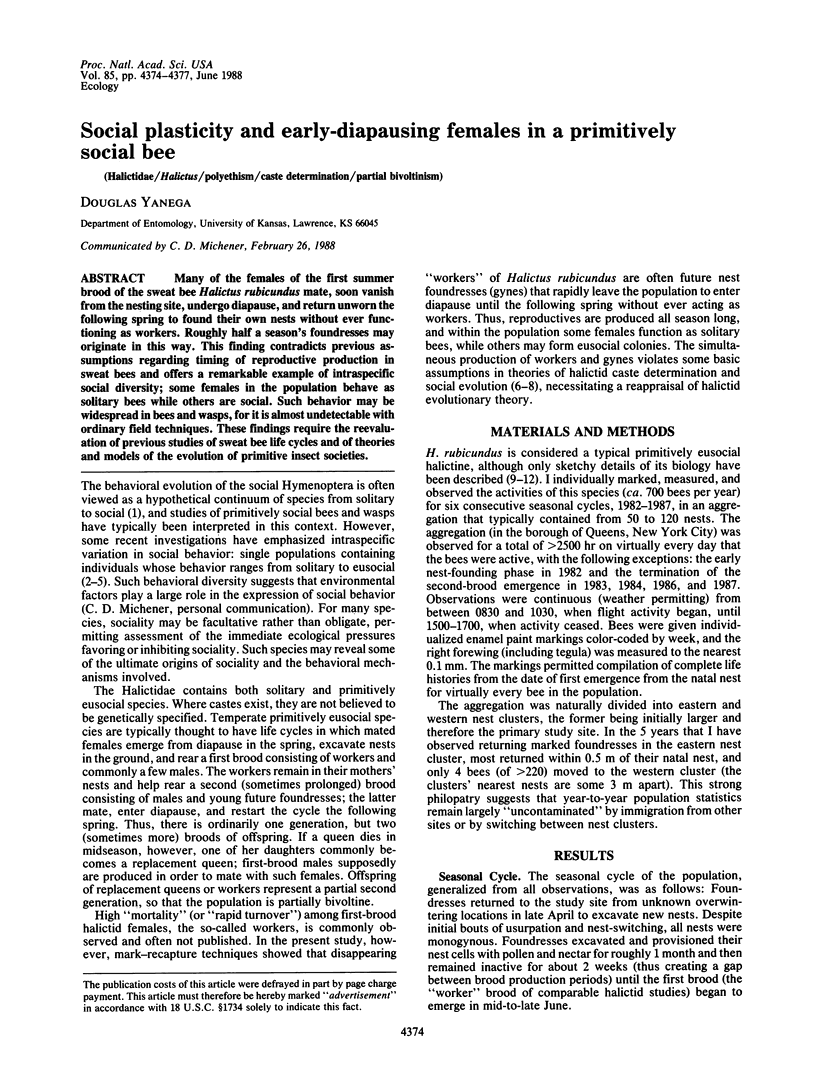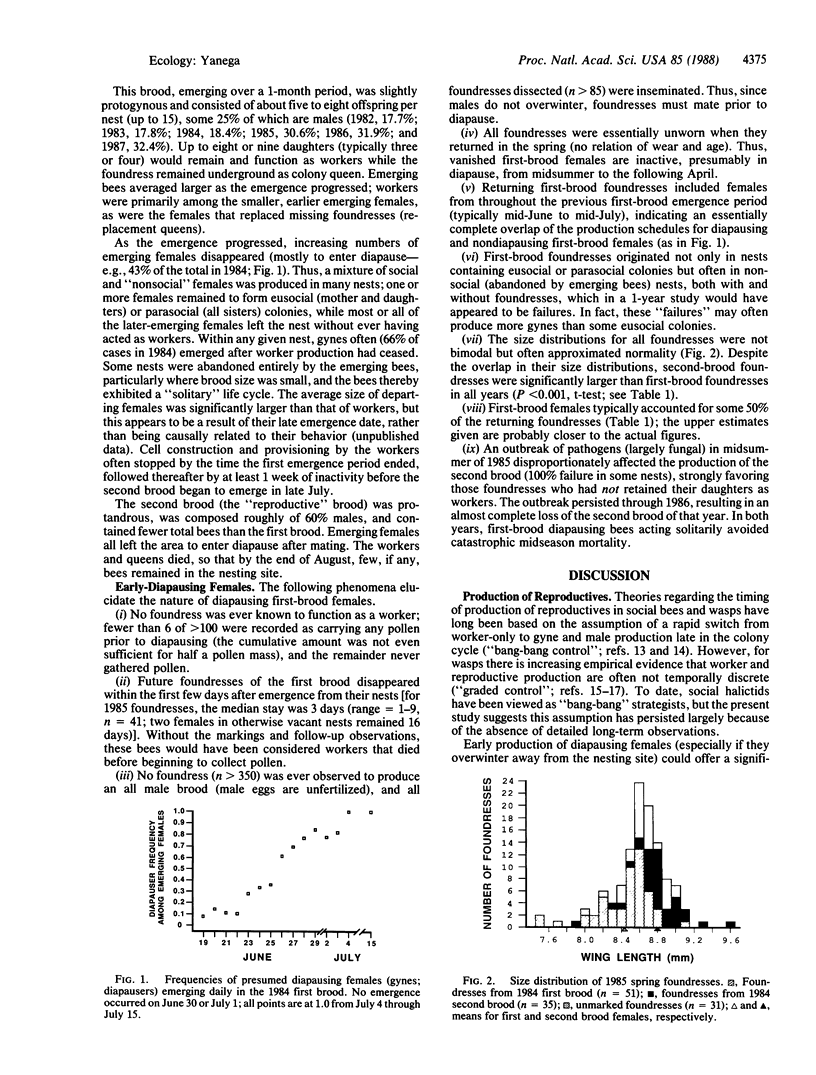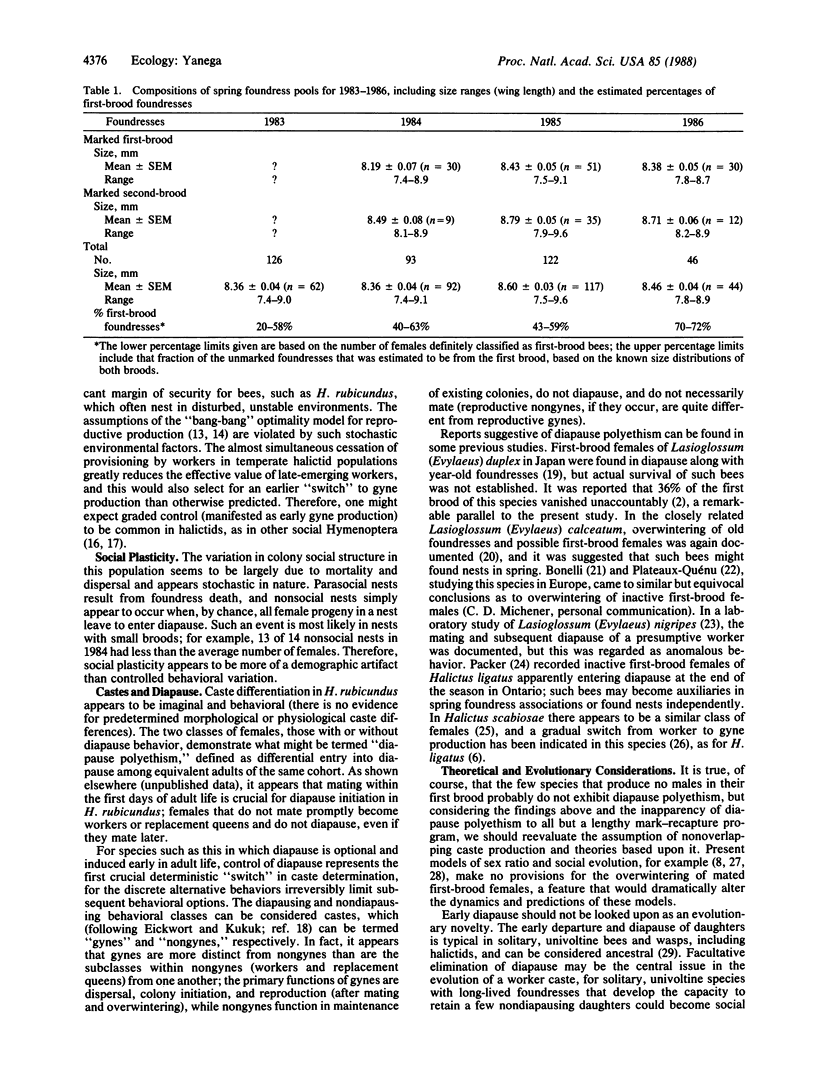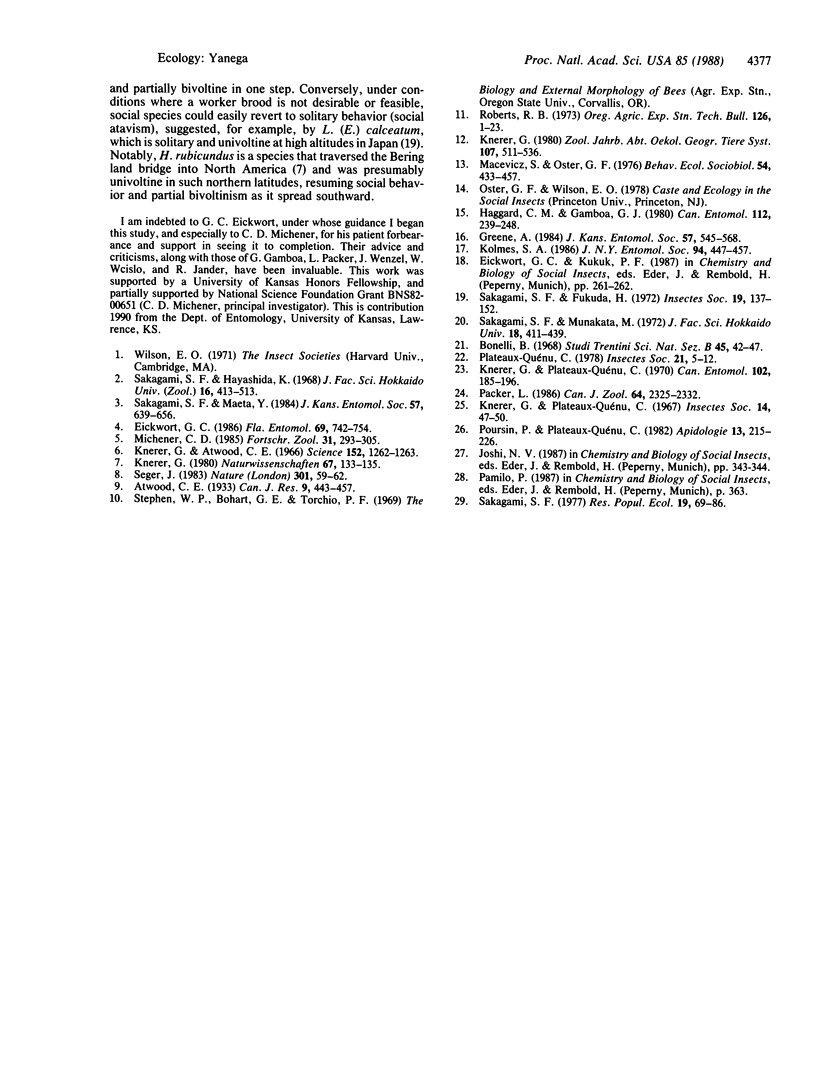Abstract
Many of the females of the first summer brood of the sweat bee Halictus rubicundus mate, soon vanish from the nesting site, undergo diapause, and return unworn the following spring to found their own nests without ever functioning as workers. Roughly half a season's foundresses may originate in this way. This finding contradicts previous assumptions regarding timing of reproductive production in sweat bees and offers a remarkable example of intraspecific social diversity; some females in the population behave as solitary bees while others are social. Such behavior may be widespread in bees and wasps, for it is almost undetectable with ordinary field techniques. These findings require the reevaluation of previous studies of sweat bee life cycles and of theories and models of the evolution of primitive insect societies.
Keywords: Halictidae, Halictus, polyethism, caste determination, partial bivoltinism
Full text
PDF



Images in this article
Selected References
These references are in PubMed. This may not be the complete list of references from this article.
- Knerer G., Atwood C. E. Polymorphism in some nearctic halictine bees. Science. 1966 May 27;152(3726):1262–1263. doi: 10.1126/science.152.3726.1262. [DOI] [PubMed] [Google Scholar]



